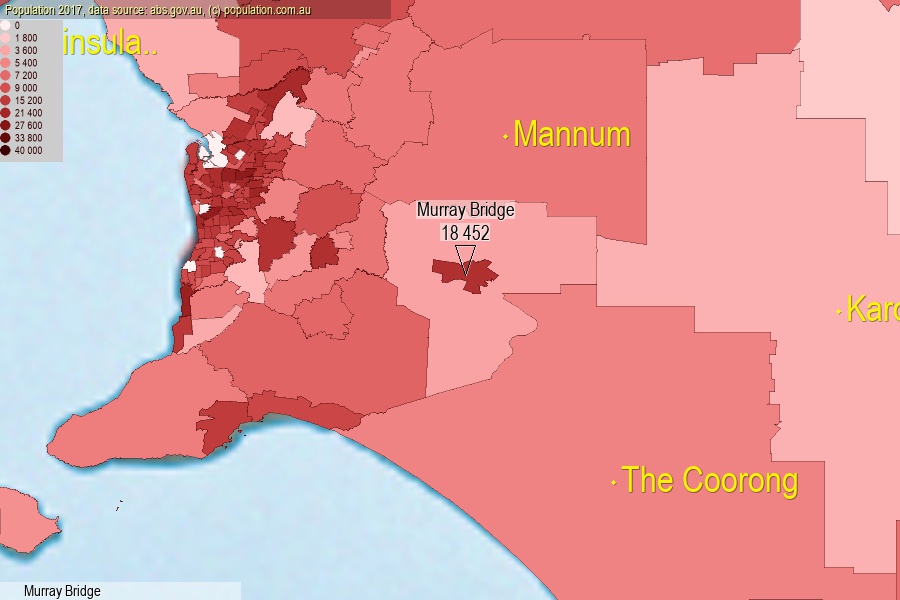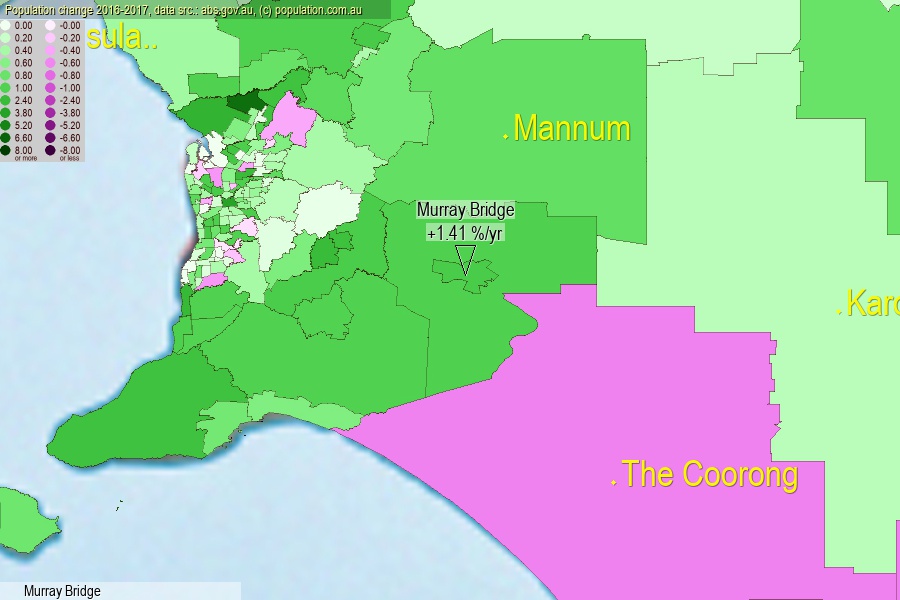 population.com.au
population.com.auLast official estimated population of Murray Bridge (as Statistical Area Level 2) was 18 452 people (on 2017-06-30)[2]. This was 0.07% of total Australian population and 1.064% of SA population. Area of Murray Bridge is 97.50 km², in this year population density was 189.25 p/km² . If population growth rate would be same as in period 2016-2017 (+1.41%/yr), Murray Bridge population in 2025 would be 20 634. [0]



Click to enlarge. Murray Bridge is located in the center of the images.
Population [people], population density [p./km²] and population change [%/year] [2]
View borders » (new window) [4]
[1991-1992] +1.08 %/Yr.
[1992-1993] +0.35 %/Yr.
[1993-1994] +0.74 %/Yr.
[1994-1995] +0.45 %/Yr.
[1995-1996] -0.28 %/Yr.
[1996-1997] -0.13 %/Yr.
[1997-1998] +0.24 %/Yr.
[1998-1999] +0.57 %/Yr.
[1999-2000] -0.09 %/Yr.
[2000-2001] +0.44 %/Yr.
[2001-2002] +1.42 %/Yr.
[2002-2003] +1.09 %/Yr.
[2003-2004] +1.37 %/Yr.
[2004-2005] +1.84 %/Yr.
[2005-2006] +1.37 %/Yr.
[2006-2007] +2.90 %/Yr.
[2007-2008] +3.93 %/Yr.
[2008-2009] +2.61 %/Yr.
[2009-2010] +1.76 %/Yr.
[2010-2011] +2.97 %/Yr.
[2011-2012] +1.39 %/Yr.
[2012-2013] +1.32 %/Yr.
[2013-2014] +1.24 %/Yr.
[2014-2015] +1.18 %/Yr.
[2015-2016] +1.30 %/Yr.
[2016-2017] +1.41 %/Yr.
[0] Calculated with linear interpolation from officially estimated population
[1] Read more about SA2 and Australian Statistical Geography Standard (ASGS) on abs.gov.au
[2] Population data from Australian Bureau of Statistics (Population and density: 2017; change: 2016-2017)
[3] Digital Boundaries: Australian Statistical Geography Standard (ASGS) 2016.
[4] Border coordinates are simplifyed using Ramer-Douglas-Peucker algorithm.